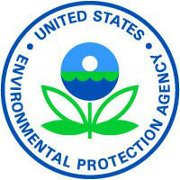
On October 1, 2017, a new ozone standard took effect in the US amid widely differing opinions. In late 2014, the EPA had proposed lowering the ozone standard to a between 65 to 70 from the current standard of 75 ppb (set in 2008 under the Bush administration). Public discussion was heated with many groups urging the EPA to maintain the existing standard. On October 1, 2015, under a court-ordered deadline, the EPA finalized the ozone National Ambient Air Quality Standard (NAAQS) standard at 70 ppb.
This was not the end of the discussion however. The U.S. Chamber of Commerce and the American Petroleum Association, who said that the rules would be a huge burden and that the cost to comply could be in the billions, filed for a review to challenge in the U.S. Court of Appeals for the D.C. Circuit. At the same time, five states filed a lawsuit challenging EPA’s new 70 ppb ozone standard, with four additional states later joining them Earlier this year, D.C. Circuit Court of Appeals granted EPA’s motion to indefinitely stay the lawsuit to give them the necessary time to review the data and the standard.
With all of this going on for the part 2 years, the EPA, now under the Trump administration, had initially sought to delay the rule. However, after lawsuits were filed by 16 state attorney generals, the EPA declined to delay the rule, which took effect on October 1, 2017. On July 20th, the House passed HR-806 by a vote of 229 to 199. Also known as the Ozone Standards Implementation Act, the bill would double the time frame under which the EPA reviews the ozone standard (from 5 yrs to 10 yrs) and also gives the EPA the ability to consider factors other than human health. This bill now sits in the Senate.
Why is this important? Michael Greenhouse,co-author of a report issued by the University of Chicago’s Energy Policy Institute spoke to Forbesabout the importance of these regulations, stating, “Our research shows that efforts to reduce ozone extend lifespans. While previous research had suggested this, the especially novel finding here is that pollution reductions lead to significant reductions in the purchase of medications that protect people from becoming sick or even dying prematurely … The implications for air pollution policy are potentially enormous.”
The new regulations have a large impact on the number of areas in the US that now are noncompliant. According to the EPA, 28 counties were classified as nonattainment areas under the 75 ppm standard and data sugegsts 241 counties violate the 70 ppb standard.

The democrats from House Department on Energy and Commerce share the dissenting views on the HR-806. The National Parks Conservation Association statement claimed, “This legislation would actually systematically weaken the Clean Air Act without a single improvement, undermine Americans’ 46-year right to healthy air based on medical science, and delay life-saving health standards already years overdue.”
Clearly, there are strong and widely varying opinions on how best to proceed. It will be interesting to hear the Senate discussions if this comes up for debate.

